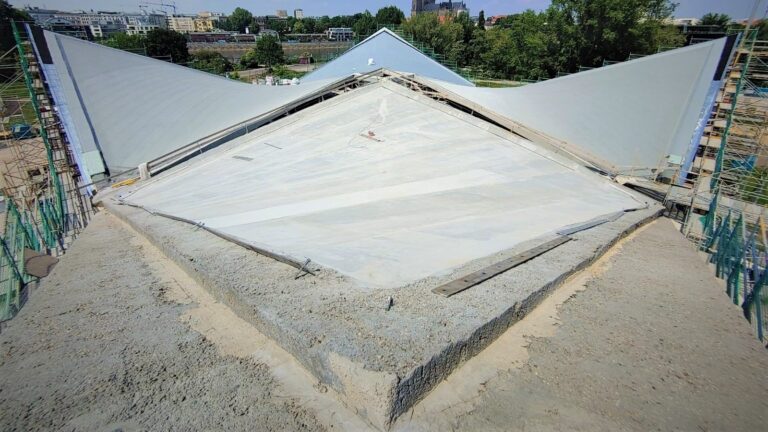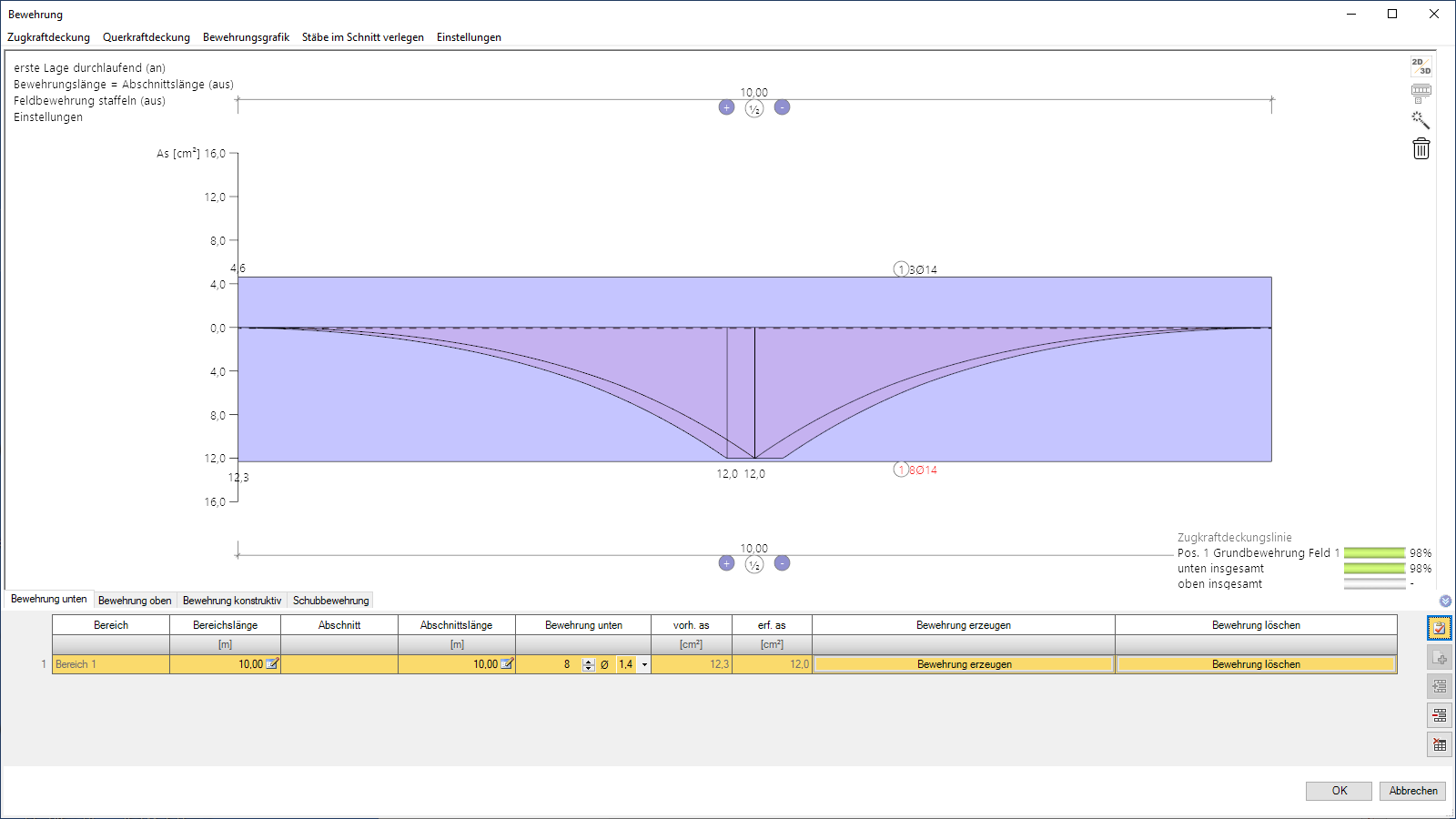
Beam on Elastic Foundation
BEB+
The BEB+ program can be used to calculate elastically supported beams and one-way slabs based on the subgrade reaction modulus method in combination with the displacement method. The user can optionally select whether foundations and stiffness should be constant, linear or erratic. The foundation can be set to zero, either completely or in individual sections. In addition, tension spring failure can optionally be considered in the calculation. If the foundation is set to zero over the total beam, at least two supports are required. The user can add further rigid or elastic supports.
Discover now more programs from the section Soil Analysis!
SHOW MOREMaterial
- Reinforced standard and lightweight concrete with selectable concrete qualities and steel grades
- Optionally with a cast-in-place complement of different quality
Structural system
- Definition of sections for cross-section offsets and foundation offsets or linear variable cross-sections or foundations
- Free definition of supports (necessary, when there is no foundation, or in addition to the foundation)
- Free arrangement of moment joints
- Freely definable cross-sections as rectangles or T-beams that can optionally be assigned to individual sections
Soil:
- Permissible base pressure resistance based on empirical values of DIN 1054 or user-defined
Groundwater:
- Stagnant groundwater can optionally be taken into account at any height level
Loads
- Freely definable beam loads in the form of
- concentrated loads
- line loads
- trapezoidal loads
- concentrated moments
- moving concentrated loads
- Free assignment of loads to a load case with types of actions according to EC 0 as well as to concurrency and alternative groups.
- Automatic combination of load cases and/or user-defined load-case combinations
Reinforced concrete design
- Calculation of all internal forces separately for the decisive design situations
- Vertical deformation of the beam
- Resulting compressive base stress
- Reinforced concrete design of the beam (bending and shear force)
- Optional shear design for a slab
- Reinforcement definition with tensile force and shear force coverage diagrams
- Durability verification via exposure classes
- Consideration of different minimum reinforcement quantities
- Verifications in the serviceability limit state:
- Crack widths
- Concrete stresses
- Reinforcing steel stresses
Geotechnical verifications
- Simplified verification with base pressure resistances (either user-defined or based on tables of DIN 1054)
Add-on modules
BEB-BEW reinforcement layout can be purchased as an additional option.
Document file formats
- Word
- Printer
General
- Various output profiles are available for selection (brief, detailed, user-defined)
- Selectable graphic scales and font sizes
- Detailed output of individual load cases
- Overview of the decisive load case combinations
Reinforced concrete design
- Decisive deformation and base pressure distribution
- Detailed internal forces behaviour for all design situations
- Bending design in the x- and y-direction at the top and bottom with detailed graphical and tabular output
- Graphical representation of the reinforcement distribution with coverage diagrams
- Crack width and stress verifications with detailed graphical and tabular output
Transfer options
- Framework RSX
- Isolated Foundation FD+
- Strip Foundation FDS+
Load import
- Building Model GEO
- Isolated Foundation FD+
- Pad Foundation FDB+
- Mast Foundation FDM+
- Reinforced Raft Foundation FDR+
- Strip Foundation FDS+
Reinforced concrete
- EN 1992
- DIN EN 1992
- ÖNORM EN 1992
- PN EN 1992
- BS EN 1992
- NTC EN 1992
- DIN 1045
- ÖNORM B 4700
Support resources
News

“With the FRILO Suite, we benefit from the use of all programs”
With the switch to the FRILO Suite, the engineering office concon has decided to rely on the FRILO subscription model. The reasons of the long-standing customer are manifold.

FRILO & CARBOrefit® | The calculation with carbon concrete pays off
With CARBOrefit® an process that enables renovation and reinforcement with carbon concrete has been integrated into the FRILO Software.






